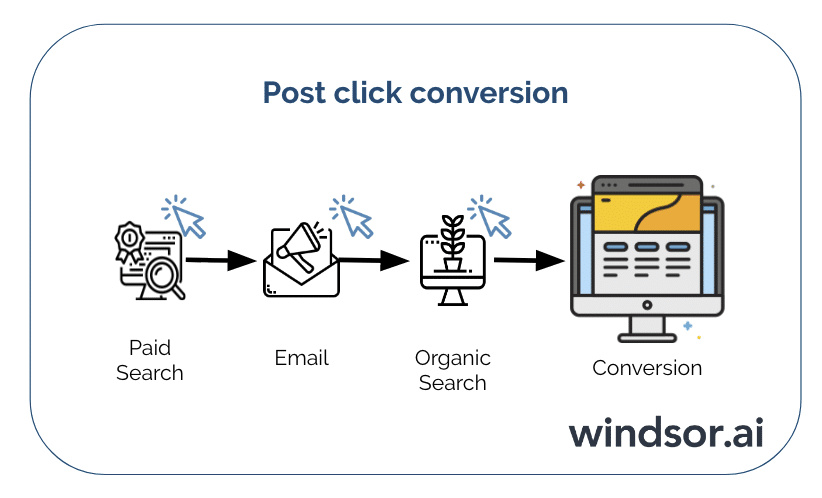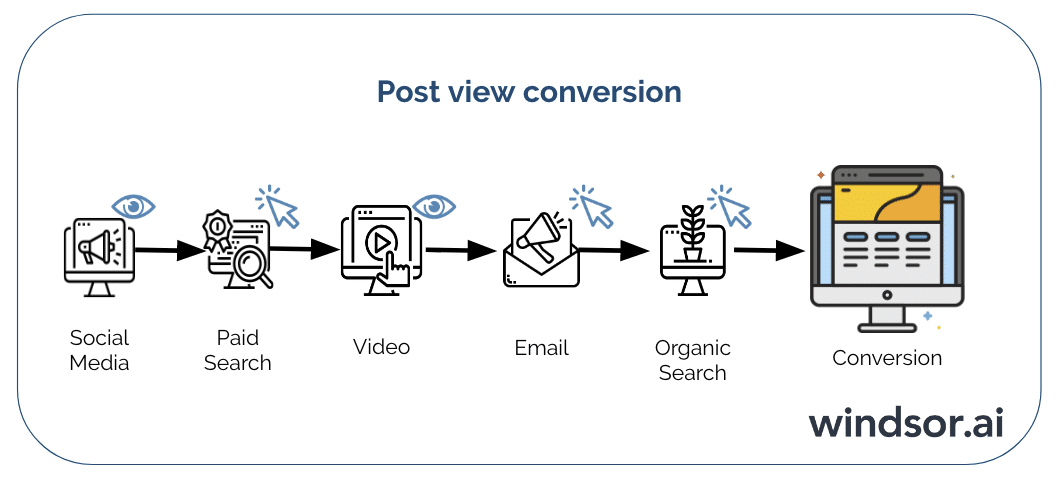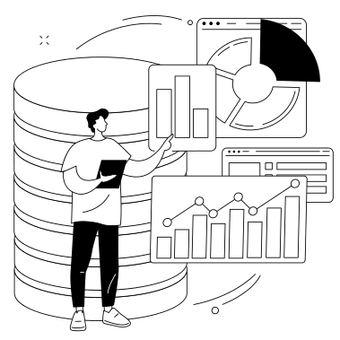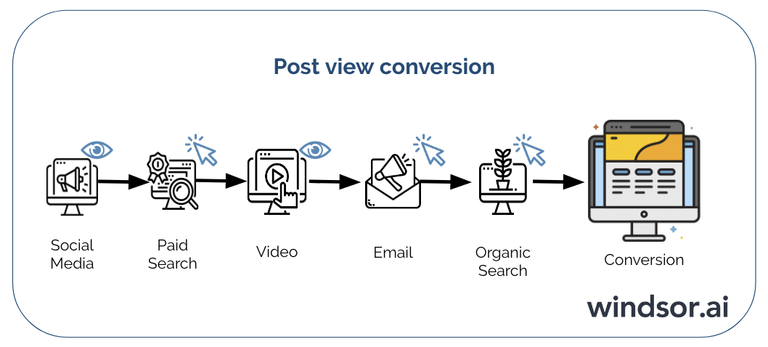In marketing measurement, there are two common ways to giving credit to each touchpoint in a conversion sequence: post-view, also known as a view-through conversion, and post-click conversion. As briefly mentioned in our general overview post on the topic of marketing attribution modeling, the decisions on whether to measure based on a post-click or post-view model depend to a great extent of the tracking possibilities you have at hand.
But before going too much into detail on this topic, let’s have a look at what post-view and post-click actually means.
Digital advertisers usually look at measuring the impact of their advertising using clicks, for example:
User A has clicked on link B before immediately converting on my website.
However, advanced advertisers look at this a bit different:
Post-Click Conversions
Our click-based example was based on the immediate action, a click in this way of measuring, preceding the conversion. In reality, the user might have had multiple different actions before the conversion action. In the example below the user has clicked on a paid search keyword, a link in an email and then converted through organic search. If attribution is done on a post-click instead of a last-click basis, each touchpoint, or click, will get a part of the conversion credit if the action happens within the defined lookback window.
The lookback window is a period when action should be matched to the conversion after an ad is clicked. For example, in low-cost eCommerce transactions, the lookback window might be 7 – 14 days, whereas, on complex products like selling a car, a lookback window of 60 days could be used.

Post-View Conversions
With post-view conversions, as the name suggests, not just the click but also the views a user has in the specified lookback window get a part of the credit for the conversion. Most of the advertisers who advertise on multiple channels will have video and social media as part of the conversion journey. These channels usually are not driving clicks, but still, contribute to outcomes. Here is how the journey we had above might look measured on a post-view conversion attribution model.

Last Click Conversions
In a last click model, all the credit for a conversion goes to the marketing channel the customer interacted with directly before making a purchase. All other marketing channels in the chain are given zero credit.
Let’s take the example of a web hosting company, that we’ll call Brand X. They have a number of marketing channels: an active Twitter account that links to another channel (an informative blogpost on the company’s website), television advertising, videos on YouTube, and Google Banner Ads displayed on a variety of websites.
Let’s say that a potential customer performs a Google search on web hosting. They click an organic search result taking them to Brand X’s website. They browse through the site, reading about the various subscription options and domain names available as well as details about security and ease-of-setting-up website management systems such as WordPress. They watch embedded YouTube videos to learn more about the offers.
They don’t make a purchase yet. They think about it for a few days.
During this time, they find the occasional banner ad from Brand X promoting a discount for new subscribers while they are casually browsing the web. After seeing a few of those banners, they decide to click on one, and then purchase a subscription.
Under a last click model, all the credit for the purchase will go to the Google-linked banner display ad.
Which one to choose?
By reading the above, the obvious would be to work with post-view data instead of post-click data. However, there are a few issues with post-view data:
- Facebook does not allow third-party impression tracking. Since launching its own attribution platform, Facebook does not allow third-party impression tracking. This means that you can of course still track views on almost everything except for Facebook, but given Facebooks importance in most advertisers’ media mix, you will not compare apples to apples anymore
- Retargeting often delivers up to 30 impressions before a conversion. Especially when using a non-algorithmic attribution model, you are likely to give too much credit to retargeting as a channel.
- Have your ads been seen? Impression tracking works in a way that an impression is counted the moment the advertising is served. This does not mean that the ad was seen. Let’s say your ad is served in the middle of a blog article, but the user never reads to the part of the blog post where your ad is. In a post-view model, it would be given credit for the conversion.

Try Windsor.ai today
Access all your data from your favorite sources in one place.
Get started for free with a 30 - day trial.
FAQ: Understanding Post-Click vs. Post-View Conversions
What is a post-view conversion?
A post-view conversion refers to a conversion where the user has previously been delivered an impression but not clicked on it.
What do you lose if you don’t measure post-click and post-view?
If you do not take into account post-click and post-view conversions, you simply will not be able to correctly assess which channels and how they affect your sales. By lowering target acquisition numbers for display advertising, you can lose users not only in statistics, but also in reality. Either your competitor will influence them with their banners, or they will simply change their minds about buying your product. I remind you that we are talking about 30-70% of your additional conversions.
You might also be interested in…
